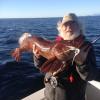-
Content Count
4,514 -
Joined
-
Last visited
Content Type
Profiles
Forums
Calendar
Everything posted by Mark Knapp
-
Thanks for the story, we have a lot of those floating around here too.
-
Well, the courting had started at the time of that picture, but not the rutting, as far as I know. We just got back from the last week of the season and didn't see any evidence of actual rutting at all.
-
Good, I'm going to try a few with the tails just floppy (feathers not glued) Should be fun. Doing some larva right now.
-
Thanks, that was very cool. Thanks. I didn't know that, but I can pretend I did when I tied them.
-
Damsel flies. Some that float..... and some that don't. The wet fly version, is made with steel blue brass beads for the body, blue glass eye beads, Lady Amherst pheasant tail fibers dyed blue, blue grizzly hackle, heavier hooks and Antron yarn wings. The ones that float, have thin wire hooks, monofilament eyes, dyed blue grizzly hackle and an Antron yarn hackle post. The extended bodies were made with blue dyed grizzly hackle glued into a single body with silicone or blue died Lady Amherst Pheasant tail fibers glued together with head cement (they were the best). The first steps for the dry version. A whole flock of them. The upper ones float, the lower ones sink. Do damsel flies ever sink? We only see the ones that float, so we tie them in dry flies. Maybe fish don't know either, or care. I'm going to try a wet version. Next, damsel fly and dragon fly larva. Thanks for looking.
-
Yes, please post.
-
Pretty
-
Kimo, got tired and quit. He said he didn't care for the way some the site was run. Bazzer didn't like the fact I was one of the moderators, used foul language on the forum one day. I gave him a warning, and he quit coming back. I don't know about the others. People come and they go.
-
Thanks a lot every one. Yes, this is a large one. The full grown bulls range from 1000 to 1200 pounds and this one is on the upper end of that. Thanks again.
-
Well, I think everyone knows I ain't a small man. Thanks.
-
Thank you, I did. This one.
-
Very cool. Pretty fish.
-
Too funny
-
Last night, Right now.
-
I'm moose hunting right now. Saw a cow and a calf from this stand this morning.
-
The boat is on pullies. We pull it in when we need to use it so that it doesn't dry up when the tide goes out.
-
Thanks Tom
-
Very nice, I'm going to tie it as a wet fly and fish it deep. I love that fly. Thanks Norm.
-
You and I differ a little bit, in that I am a little more forgiving on pictures taken with fish or game, I don't call them all "Hero shots". I just don't care much for the ones with a lot of blood or people sitting and stepping on the animal. It's about memories to me, I can look at the pictures and memories of the experience come back, or I can show friends. but I don't have to put the animal in a head lock. But, I am with you.
-
You strip it back up to about a couple of rod lengths and cast again. It will not spey (or roll) cast from very far out.
-
It is, three or four trips a year down there, twelve years. It's starting to be a habit. I like it very much. Thanks.
-
From the 22nd of August till the 31st my friend Rick and I hosted my Lake Havasu guide and his wife to some fishing NW of Sitka. Rick and I were able to fish for 8 of the 9 days with all fly gear while our guests fished with conventional gear. We caught lots of fish. We gave about seventy pounds of frozen, vacuum packed fillets to the food bank. Thirty five pounds went home with D.A. and his wife. and we brought home about 180 pounds of ling cod, rock fish and halibut. Me with the first days catch, all with fly rod. That's the second biggest ling cod I've ever caught on a fly. Four lings and the rest are black rock fish. These are all over. Again. D.A. with a days catch, mostly on fly rod but some on conventional. One of our dinners, fish tacos. These are going home with us, frozen, vacuum packed fillets.
-
I've been fishing deep for a long time. I started 12 years ago in the ocean fly fishing with purely IGFA rules for ling cod, halibut and rock fish down to 120 feet. IGFA rules mean; no extra weight and no down riggers. It means the fly line must carry the lure (fly), the terminal gear cannot carry the line. Essentially, it means the set-up has to be able to be capable of a back-cast. There are other things but that's the crux of it. I'm going to use some of the things I've learned in the ocean for deep fresh water. Mainly super sinking fly lines I make myself. And, of course, the flies adapted for deep water.
-
Thanks buddy.

